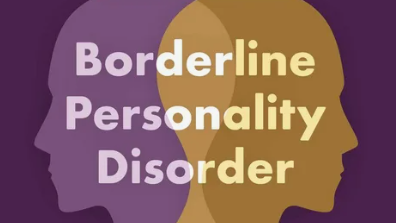Borderline Personality Disorder (BPD) is a complex mental health condition characterized by emotional instability, intense interpersonal relationships, fear of abandonment, and impulsive behaviors. For many adults, identifying the signs early and receiving an accurate borderline personality disorder screening can make a significant difference in long-term treatment outcomes. While BPD can be challenging, it is also highly treatable—especially with structured psychotherapy and behavioral therapy methods.
This comprehensive guide explains the importance of early screening, what diagnostic evaluations involve, and how evidence-based therapies help individuals manage symptoms and lead fulfilling lives.
What Is Borderline Personality Disorder?
Borderline Personality Disorder is a condition rooted in emotional dysregulation. People with BPD often experience rapidly shifting moods, heightened sensitivity to perceived rejection, difficulty maintaining stable relationships, and struggles with identity or self-image. Additional symptoms may include:
- Intense fear of abandonment
- Unstable or intense relationships
- Self-harming behaviors or impulsive actions
- Chronic feelings of emptiness
- Difficulty controlling anger
- Dissociation during moments of stress
While BPD symptoms can feel overwhelming, early intervention through proper borderline personality disorder screening can make treatment significantly more effective.
The Importance of Borderline Personality Disorder Screening
Many individuals with BPD go undiagnosed for years, often because symptoms overlap with other conditions like anxiety disorders, depression, bipolar disorder, or PTSD. A structured BPD screening helps clinicians identify core features of the disorder and differentiate it from similar conditions.
What Happens During a BPD Screening?
A comprehensive borderline personality disorder screening usually includes:
- Clinical Interviews
A licensed mental health professional conducts a detailed conversation exploring emotional patterns, behaviors, relationships, history of trauma, and daily functioning.
- Standardized Assessments
Clinicians may use validated questionnaires such as:
- The McLean Screening Instrument for BPD (MSI-BPD)
- The Personality Assessment Inventory (PAI)
- The Structured Clinical Interview for DSM (SCID)
- Behavioral Observations
Professionals may assess communication patterns, emotional responses, and relationship dynamics.
- Medical Evaluation
Screening may involve ruling out medical causes or co-occurring conditions like ADHD, depression, anxiety, or substance use disorders.
Effective screening ensures individuals are paired with the most suitable psychotherapy and behavioral therapy approaches for long-term success.
Why Psychotherapy Is Essential for BPD Treatment
While medication can help with co-occurring symptoms such as anxiety, mood swings, or depression, psychotherapy is the cornerstone of treatment for Borderline Personality Disorder. In fact, therapy is the primary intervention recommended by mental health associations and clinical research worldwide.
Psychotherapy helps individuals:
- Understand and regulate emotions
- Improve communication and interpersonal relationships
- Reduce impulsive behaviors
- Strengthen coping skills
- Build a healthier sense of self
Below are the leading therapeutic approaches used in BPD treatment.
Evidence-Based Behavioral Therapy Approaches for BPD
- Dialectical Behavior Therapy (DBT)
DBT is widely recognized as one of the most effective treatments for BPD. It combines principles of mindfulness with behavioral change strategies. DBT includes four key modules:
- Emotion Regulation – understanding and managing intense emotional reactions
- Interpersonal Effectiveness – improving communication and relationship skills
- Distress Tolerance – coping with crisis situations without harmful behaviors
- Mindfulness – staying grounded in the present moment
Many individuals experience significant improvement within the first year of DBT, especially in reducing self-harm and impulsivity.
- Cognitive Behavioral Therapy (CBT)
CBT focuses on identifying unhealthy thoughts and replacing them with more realistic, helpful patterns. While originally developed for anxiety and depression, CBT is effective for managing BPD symptoms such as rumination, negative thinking, and emotional reactivity.
- Mentalization-Based Therapy (MBT)
MBT teaches individuals how to understand the mental states—thoughts, emotions, intentions—behind their own and others’ behaviors. This approach helps reduce misunderstandings and strengthens emotional regulation during interpersonal conflict.
- Schema-Focused Therapy
This therapy explores deeply rooted emotional patterns called “schemas,” often formed during childhood. It aims to reshape unhealthy beliefs about relationships, self-worth, and safety.
- Transference-Focused Psychotherapy (TFP)
TFP focuses on understanding emotional reactions that occur within the therapist-client relationship. By exploring these reactions, individuals gain insight into patterns they repeat in daily life.
How Psychotherapy and Behavioral Therapy Work Together
Many treatment plans combine psychotherapy and behavioral therapy to address the full spectrum of BPD symptoms. For example:
- A person might participate in DBT group skills training while attending individual psychotherapy sessions each week.
- CBT can support DBT by reinforcing thought-challenging skills.
- Trauma-focused therapy may be integrated once a person has mastered emotional stabilization skills.
This layered approach ensures individuals receive comprehensive support tailored to their needs.
Benefits of Early Screening and Therapy
Through proper borderline personality disorder screening, individuals can receive the most effective treatment early—often preventing years of emotional distress or unstable relationships. Early intervention offers many proven benefits:
- Reduced impulsive behaviors
- Improved emotional stability
- Stronger, healthier interpersonal relationships
- Better coping skills during stress
- Reduced hospitalizations or crisis episodes
- Increased self-awareness and confidence
- Ability to build long-term goals and maintain stability
Most importantly, therapy provides individuals with hope and practical tools for living a fulfilling, emotionally balanced life.
How to Get Started
If you suspect you or someone you love may be experiencing symptoms of BPD, the first step is scheduling a professional borderline personality disorder screening with a licensed mental health provider. A thorough evaluation helps create a tailored treatment plan centered on psychotherapy and behavioral therapy—two of the most effective and evidence-based options for managing the condition.
With the right support, individuals with BPD can develop emotional resilience, build healthier relationships, and thrive. Early screening, ongoing therapy, and a strong therapeutic alliance make long-term healing not only possible but highly achievable.



